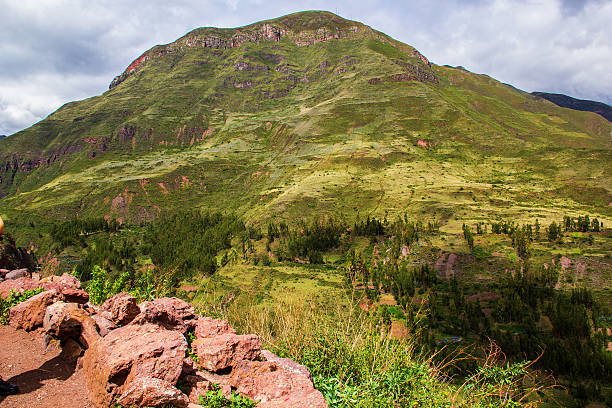The question “how wide are the Jaroconca Mountain” is more than a matter of measurement—it’s an invitation to explore one of nature’s most expansive and diverse terrains. The Jaroconca Mountain is known not only for its height and scenic beauty but also for its extensive horizontal spread, which shapes its ecosystems, climate, and human interactions.
Measuring a mountain’s width provides insights into its ecological zones, geological history, and potential for outdoor exploration. In this article, we’ll examine the Jaroconca Mountain from multiple perspectives: its geography, width, habitats, geological formation, human significance, and environmental considerations.
Geographic Overview of Jaroconca Mountain
Location and Topography
The Jaroconca Mountain is located in a region characterized by rugged landscapes, valleys, and flowing rivers. Its exact position is strategic, connecting diverse ecological zones and providing natural corridors for wildlife. The mountain’s topography is a blend of gentle slopes, steep cliffs, and wide ridges, which contributes to the question: how wide are the Jaroconca Mountain?
Understanding Mountain Width
The width of a mountain refers to the distance from one base to the opposite base across its broadest section. Unlike height, which is measured from the base to the peak, width reflects the mountain’s footprint on the land. In the case of the Jaroconca Mountain, its base spreads across several kilometers, creating a wide and varied landscape.
The Role of Width in Ecosystem Diversity
Multiple Habitats Across the Mountain
One of the most remarkable features of the Jaroconca Mountain is the variety of habitats its width accommodates. Wide mountains like Jaroconca allow for layered ecosystems: dense forests at lower elevations, subalpine meadows mid-way, and rocky highlands toward the peaks.
Flora and Fauna
The expansive width creates room for a diverse range of flora and fauna. Forested slopes are home to deer, wild cats, and numerous bird species, while alpine zones support unique plants and small mammals adapted to harsher climates. The mountain’s breadth ensures that species with varying habitat needs can coexist.
Geological Formation and Width
Tectonic Activity and Mountain Spread
The width of the Jaroconca Mountain is a result of millions of years of tectonic movement. As Earth’s plates shifted, layers of rock were pushed upward and outward, forming both height and horizontal extent. The mountain’s width today reflects these geological processes combined with natural erosion.
Rock Composition and Its Effect
Different rock types influence how the mountain spreads. Softer rocks erode more quickly, creating gentle slopes, while harder rocks maintain steep ridges. The Jaroconca Mountain contains a mixture of sedimentary and igneous rocks, producing a diverse width profile with wide valleys and narrow ridgelines.
Climate Influence on Width
Microclimates Across the Mountain
The broad width of the Jaroconca Mountain leads to varied microclimates. For example, valleys on the leeward side tend to be drier, while slopes facing prevailing winds receive more precipitation. This climatic variation across the width supports different plant and animal communities.
Seasonal Changes and Width
Seasonal shifts also highlight the mountain’s vastness. Snow may blanket higher ridges, while lower areas remain green. The width ensures that multiple activities can occur simultaneously, from snow sports in winter to hiking and camping in summer.
Human Interaction with Jaroconca Mountain
Hiking, Exploration, and Adventure
The expansive width makes the Jaroconca Mountain a prime destination for hikers and adventurers. Long trails stretch across several kilometers, offering panoramic views and a sense of immersion in nature. Knowledge of the mountain’s width helps hikers plan routes and understand the scale of their journey.
Cultural and Historical Importance
Wide mountains like Jaroconca have historically served as landmarks, spiritual sites, and natural boundaries. Communities have used the expansive terrain for farming, settlements, and ceremonial practices, making the mountain not only a natural wonder but a cultural symbol.
Conservation and Environmental Considerations
Preserving Biodiversity
The mountain’s width supports a variety of habitats, which means that conservation efforts must consider the full breadth of the ecosystem. Protecting wide-ranging species requires maintaining connected landscapes across the mountain.
Challenges of Human Activity
Wide mountains are often vulnerable to human impacts, including deforestation, tourism, and mining. Sustainable practices are essential to ensure that the Jaroconca Mountain’s width continues to support its ecological and recreational value.
Tools and Techniques for Measuring Width
Modern Mapping Approaches
Geographers use satellite imagery, drones, and Geographic Information Systems (GIS) to measure the width of mountains accurately. These technologies allow researchers to assess the Jaroconca Mountain’s footprint and identify variations in slope and terrain.
Overcoming Measurement Challenges
Dense forests, rugged cliffs, and irregular terrain can complicate width measurements. Combining multiple approaches ensures accurate estimates of how wide the Jaroconca Mountain truly is.
Tourism and Exploration Opportunities
Experiencing the Mountain’s Width
For visitors, the width of the mountain translates into varied experiences. Hikers can explore multiple ecological zones in a single day, while photographers and naturalists benefit from the diversity in landscapes.
Adventure Activities
The mountain’s breadth allows for a variety of seasonal activities. Hiking, mountain biking, and camping are popular in summer, while snow trekking and skiing can be enjoyed in winter, all facilitated by the mountain’s expansive width.
Conclusion: Appreciating the True Width of Jaroconca Mountain
As we explore the question “how wide are the Jaroconca Mountain”, we realize that width is not just a physical measurement but a window into the mountain’s ecological, cultural, and recreational significance. The expansive terrain supports diverse habitats, offers a range of human activities, and preserves geological history.








Leave a Reply